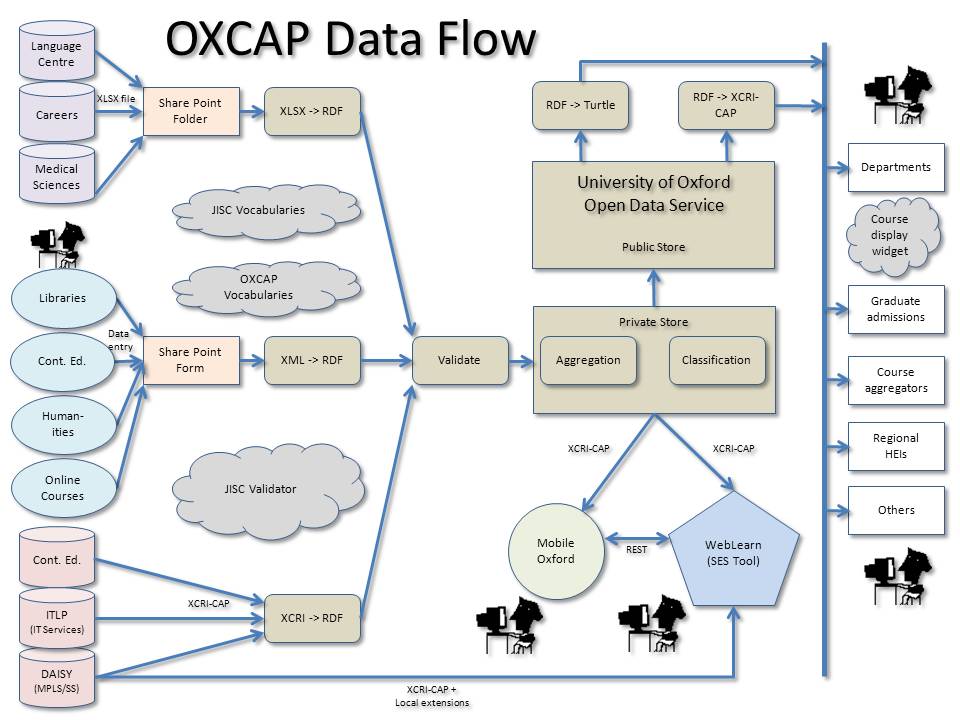We thought it may be useful to explain how data about graduate training makes its way from training providers into the SES tool in WebLearn. To do this we produced the diagram below. This shows the 3 different methods of data collection: spreadsheet (XLSX) files , XCRI-CAP v1.2 feeds and via a custom data entry form hosted in Share Point.
In all cases the source format is transformed from XML into RDF (Resource Description Framework). The RDF data is then validated and stored in the University of Oxford’s Open Data Service (ODS). ODS is a giant RDF database and stores numerous other ‘open datasets’ such as OxPoints location data.
ODS has two distinct storage areas: a ‘public’ store and a password-protected ‘private’ store, in both cases the RDF is converted into XCRI-CAP v1.2 (and other formats if so desired) and made available as an XML feed.
The public store supplies XCRI-CAP feeds for external use such as course aggregators or for display on (departmental or college) websites; to facilitate this we have produced a small JavaScript widget which allows a searchable subset of courses to be displayed on a web page.
The private store supplies a slightly richer feed to internal applications such as WebLearn and Mobile Oxford.
WebLearn exposes the course information within its SES tool and Mobile Oxford will ultimately present a course search ‘app’ which will allow students to locate courses and initiate booking via their mobile phones.

[…] the excellent training that is on offer at Oxford. (There is an earlier blog post describing how graduate training data moves around the university to make this possible.) Share Point plays a key role in this […]
[…] Adam Marshall posted a nice overview of the Data Flow in the OXCAP Project. […]